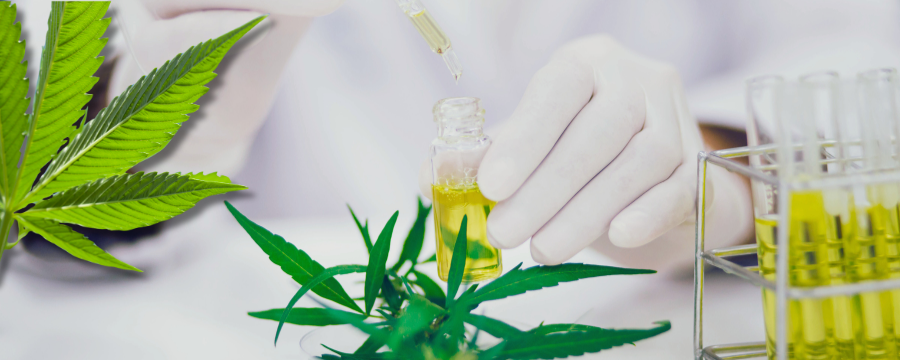- Texas Medical Cannabis Dispensaries vs Hemp Stores
- 5 Easy Steps to Fill Your Prescription
- Decoding Texas Cannabis Ratios: 20:1, 1:1, 0:1…
- Dosing & Product Education
- Texas CUP News & Legislation
- Conditions & Symptom Relief
- Practice Updates & Patient Stories
- Caregivers & Family Support
- Compliance & Legal FAQs
- Texas Medical Cannabis Guidebook 📚
- Complete Learning Library 📚
Decoding Texas Ratios: A Patient’s Guide to 20:1, 1:1, and 0:1 Labels

Decoding Texas Ratios: A Patient’s Guide to 20:1, 1:1, and 0:1 Labels
🌿 What’s in the Cannabis Plant (And Why It Matters for Patients)
Before we jump into ratios, let’s zoom out for a moment. The cannabis plant isn’t made of just one compound—it contains over 100 naturally occurring cannabinoids. These are the active ingredients that interact with your body’s endocannabinoid system to influence symptoms like pain, mood, inflammation, appetite, and sleep.
You’ve probably heard of:
-
CBD (cannabidiol) – known for calming and anti-inflammatory properties
-
THC (tetrahydrocannabinol) – responsible for psychoactive effects but also pain and nausea relief
But there are many more:
-
CBN – associated with sleep and sedation
-
CBC – studied for mood and inflammation
-
CBG – may support nerve and bladder health
In Texas, most medical products include just a few of these cannabinoids, especially CBD and THC, in carefully controlled ratios. Understanding what these ratios mean helps you choose the right product for your specific needs.
👀 What Do These Numbers Even Mean?
If you’ve looked at your bottle and seen “20:1” or “1:1,” you’re not alone in wondering—what exactly are these ratios telling me?
Under the Texas Compassionate Use Program (CUP), cannabis products are labeled using a “low potency first” ratio. That means the first number always represents the less psychoactive cannabinoid, and the second number represents THC.
💡 Why Ratios Matter More Than You Think
 The ratio on your label tells you how much CBD, CBN, or other cannabinoids are present in relation to THC—and that determines how your product behaves in the body.
The ratio on your label tells you how much CBD, CBN, or other cannabinoids are present in relation to THC—and that determines how your product behaves in the body.
Here’s a quick breakdown of what some common Texas ratios mean:
| Ratio | What It Means | Best For |
|---|---|---|
| 20:1
CBD:THC tincture |
100mg CBD : 5mg THC per mL | Daytime anxiety, inflammation, low-THC tolerance |
| 19:1
CBD:THC tincture |
95mg CBD : 5mg THC per mL | Similar to 20:1, slightly adjusted dose |
| 4:1
CBD:THC tincture |
600mg CBD : 150mg THC per 30 mL | Balanced support with mild THC effects |
| 1:1
CBD:THC |
Equal parts CBD and THC (5mg:5mg, 10mg:10mg, etc.) | Pain, sleep, and full-body relaxation |
| 0:1 | Pure THC in 5mg, 10mg, 20mg, 30mg, and 50 mg doses | Severe symptoms, chronic pain, cancer |
| 1:1 CBN:THC | 300mg:300mg per 30mL
(10mg CBD:10mb THC per 1mL) |
Sedation, sleep aid, nighttime use |
These ratios impact relief, side effects, and functionality. More CBD usually means gentler daytime use, while more THC or CBN is ideal for stronger relief or sleep support.
*It is very important to read your dose concentration and understand it. At Floweret MD, patients can always reach out if they have questions about interpreting the product labels by call, text, or messaging the patient portal.
✅ What Happens When You Understand Your Ratio
When patients know how to interpret their product labels, they report:
-
More consistent symptom relief
-
Fewer side effects (like unexpected drowsiness or overstimulation)
-
Better communication with their physician
-
Less waste, since they’re dosing more accurately
Understanding your ratio also makes it easier to adjust your routine—like knowing when to take what.
For example:
Some patients find that a 1:1 ratio works beautifully in the morning to ease anxiety, muscle tension, or pain.
But others—especially those newer to THC or with a low tolerance—might feel too sleepy or foggy with that same morning dose.
The key is to match your ratio and timing to your body, your condition, and your day’s demands. Start low, go slow, and take note of when you feel your best.
It’s not about memorizing numbers—it’s about understanding what they mean for you.
🧾 How to Read Your Label Like a Pro
🧪 1. Identify the Ratio
Look for something like “20:1,” “1:1,” or “0:1.” Then look for the cannabinoid ratio like “CBD:THC,” “CBG:THC,” “CBN:THC.” The first number is in relation to the lower potent cannabinoid, CBD (or CBN, etc), and the second number is THC part.
📏 2. Look at Concentration
Many products also show how many milligrams per mL—important when drawing up syringes or dropper doses. Example:100mg CBD / 5mg THC / 1mL
This means there are 100 milligrams of CBD and 100 mg THC in each 1 milliliter of product.
🌙 3. Match the Ratio to Your Goals
-
Sleep = 1:1 or 1:1 CBN:THC
-
Nerve pain = 4:1 or 1:1
-
Anxiety = 20:1 or 19:1 (or 4:1 or 3:1)
-
Appetite or chemo symptoms = 0:1
- Severe pain = 0:1 THC
📦 4. Store by Label
If you have more than one bottle at home, label them by purpose (e.g., “nighttime,” “breakthrough,” “daily”) so you don’t confuse them.
📌 Final Thought
You don’t have to be a chemist to use cannabis—but you do deserve to understand what you’re taking.
Once you learn how to read your ratio, it becomes easier to fine-tune your relief, avoid side effects, and feel confident with every dose.
💬 Still unsure what your ratio means—or whether it’s right for you?
We’re here to help.
➡️ Schedule a quick telehealth review or send us a photo of your label.
Let’s make sure your bottle is working for your goals—not against them.
This content is educational and not medical advice. Consult a qualified healthcare professional before starting, changing, or stopping any cannabis or other treatment.
References
-
Texas Health & Safety Code, Chapter 487 – Compassionate-Use Act.
https://statutes.capitol.texas.gov/Docs/HS/htm/HS.487.htm -
Penn State College of Medicine – Understanding medical marijuana product labeling.
https://www.med.psu.edu/medical-marijuana/patient-education -
University of Washington – Cannabinoid dosing and product ratios.
https://depts.washington.edu/csde/uwdata/cannabis-education



